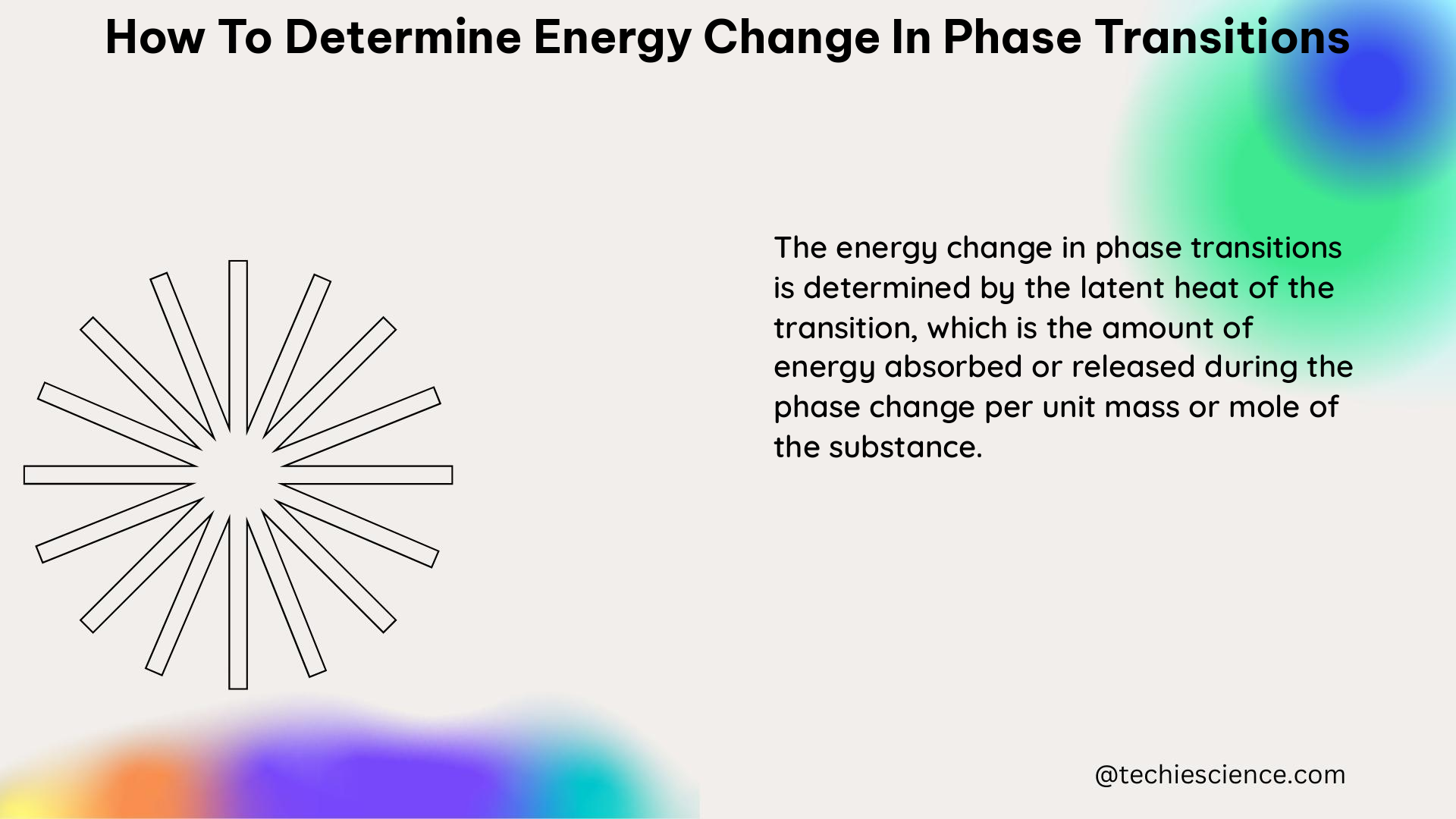Determining the energy change during phase transitions is a crucial aspect of understanding thermodynamics and the behavior of materials. By analyzing the molar heat of fusion, vaporization, and sublimation, as well as the heat required for specific phase changes, we can quantify the energy involved in these processes. This comprehensive guide will provide you with the necessary tools and techniques to accurately determine the energy change in various phase transitions.
Quantifying Phase Changes
Molar Heat of Fusion (ΔHfus)
- The energy required to convert one mole of a substance from a solid to a liquid state.
- Units: kJ/mol
- Example: Water (0°C) – ΔHfus = 6.01 kJ/mol
Molar Heat of Vaporization (ΔHvap)
- The energy required to convert one mole of a substance from a liquid to a gas state.
- Units: kJ/mol
- Example: Water (100°C) – ΔHvap = 40.65 kJ/mol
Molar Heat of Sublimation (ΔHsub)
- The energy required to convert one mole of a substance directly from a solid to a gas state.
- Units: kJ/mol
- Example: Iodine (ΔHsub = 60.46 kJ/mol)
Molar Heat of Transition (ΔHtransition)
- The general term for the molar heat of fusion, vaporization, or sublimation, depending on the phase change.
- Units: kJ/mol
Calculating Energy Changes

Heat (q) Required for a Phase Transition
- The heat required for a phase transition is given by the formula:
- q = nΔHtransition
- where n is the number of moles and ΔHtransition is the molar heat of the phase transition.
Energy Change for a Specific Mass
- To calculate the energy change for a specific mass of a substance, use the following formula:
- q = m × (ΔHtransition / M)
- where m is the mass of the substance, ΔHtransition is the molar heat of the phase transition, and M is the molar mass of the substance.
Example: Energy Change for Melting Mercury
- For 78.0 g of Hg melting at −38.8°C, the energy change is:
- ΔHfus = 2.29 kJ/mol
- Mass = 78.0 g
- Moles = Mass / Molar Mass = 78.0 g / 200.59 g/mol = 0.39 mol
- q = nΔHfus = 0.39 mol × 2.29 kJ/mol = 0.89 kJ
Phase Transition Types
Endothermic Processes
- Fusion (solid to liquid)
- Vaporization (liquid to gas)
- Sublimation (solid to gas)
- These processes absorb energy from the surroundings.
Exothermic Processes
- Freezing (liquid to solid)
- Condensation (gas to liquid)
- Deposition (gas to solid)
- These processes release energy to the surroundings.
Example Problems
Energy Change for Melting Aluminum
- What is the energy change when 30.8 g of Al solidify at 660°C?
- ΔHfus = 10.7 kJ/mol
- Mass = 30.8 g
- Moles = Mass / Molar Mass = 30.8 g / 26.98 g/mol = 1.14 mol
- q = nΔHfus = 1.14 mol × 10.7 kJ/mol = 12.2 kJ
Energy Change for Boiling Bromine
- What is the energy change when 111 g of Br2 boil at 59.5°C?
- ΔHvap = 15.4 kJ/mol
- Mass = 111 g
- Moles = Mass / Molar Mass = 111 g / 159.81 g/mol = 0.69 mol
- q = nΔHvap = 0.69 mol × 15.4 kJ/mol = 10.6 kJ
Additional Considerations
- The phase transition energy changes can be affected by factors such as pressure, impurities, and the presence of other substances.
- Accurate measurements of the molar heat of transition are crucial for predicting and understanding the behavior of materials during phase changes.
- Advanced techniques like calorimetry and differential scanning calorimetry (DSC) can provide more precise measurements of phase transition energies.
Reference:
- https://chem.libretexts.org/Courses/University_of_Arkansas_Little_Rock/Chem_1402%3A_General_Chemistry_1_(Belford)/Text/5%3A_Energy_and_Chemical_Reactions/5.3%3A_Energy_and_Phase_Transitions
- https://pubs.acs.org/doi/10.1021/acs.macromol.0c02144
- https://www.ck12.org/book/ck-12-chemistry-basic/section/17.3/

The lambdageeks.com Core SME Team is a group of experienced subject matter experts from diverse scientific and technical fields including Physics, Chemistry, Technology,Electronics & Electrical Engineering, Automotive, Mechanical Engineering. Our team collaborates to create high-quality, well-researched articles on a wide range of science and technology topics for the lambdageeks.com website.
All Our Senior SME are having more than 7 Years of experience in the respective fields . They are either Working Industry Professionals or assocaited With different Universities. Refer Our Authors Page to get to know About our Core SMEs.